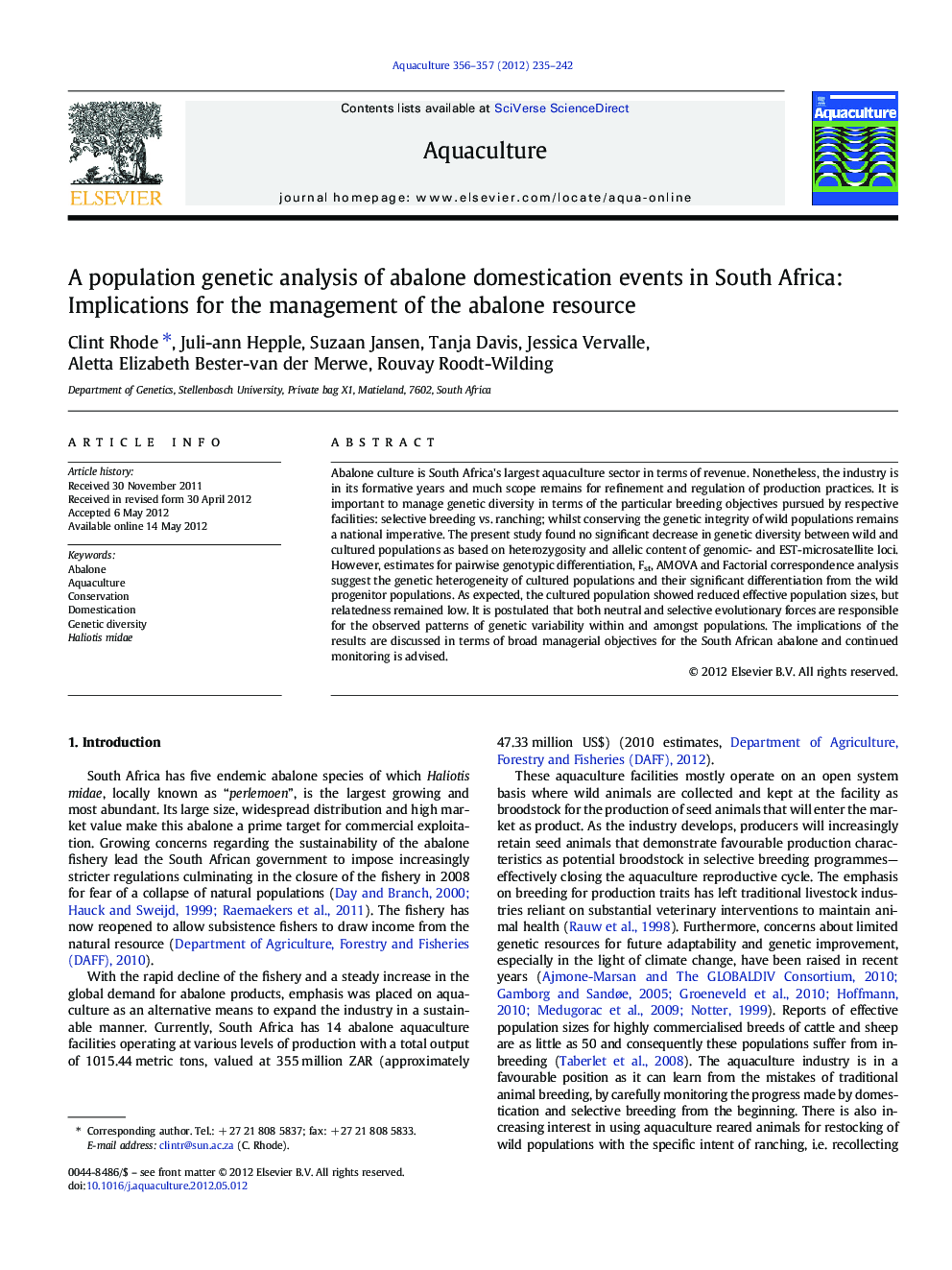| Article ID | Journal | Published Year | Pages | File Type |
|---|---|---|---|---|
| 2422570 | Aquaculture | 2012 | 8 Pages |
Abalone culture is South Africa's largest aquaculture sector in terms of revenue. Nonetheless, the industry is in its formative years and much scope remains for refinement and regulation of production practices. It is important to manage genetic diversity in terms of the particular breeding objectives pursued by respective facilities: selective breeding vs. ranching; whilst conserving the genetic integrity of wild populations remains a national imperative. The present study found no significant decrease in genetic diversity between wild and cultured populations as based on heterozygosity and allelic content of genomic- and EST-microsatellite loci. However, estimates for pairwise genotypic differentiation, Fst, AMOVA and Factorial correspondence analysis suggest the genetic heterogeneity of cultured populations and their significant differentiation from the wild progenitor populations. As expected, the cultured population showed reduced effective population sizes, but relatedness remained low. It is postulated that both neutral and selective evolutionary forces are responsible for the observed patterns of genetic variability within and amongst populations. The implications of the results are discussed in terms of broad managerial objectives for the South African abalone and continued monitoring is advised.
► Independent domestication events for South African abalone. ► Genetic drift and selection may facilitate genetic differentiation. ► Objectives for abalone management, genetic enhancement and conservation.
